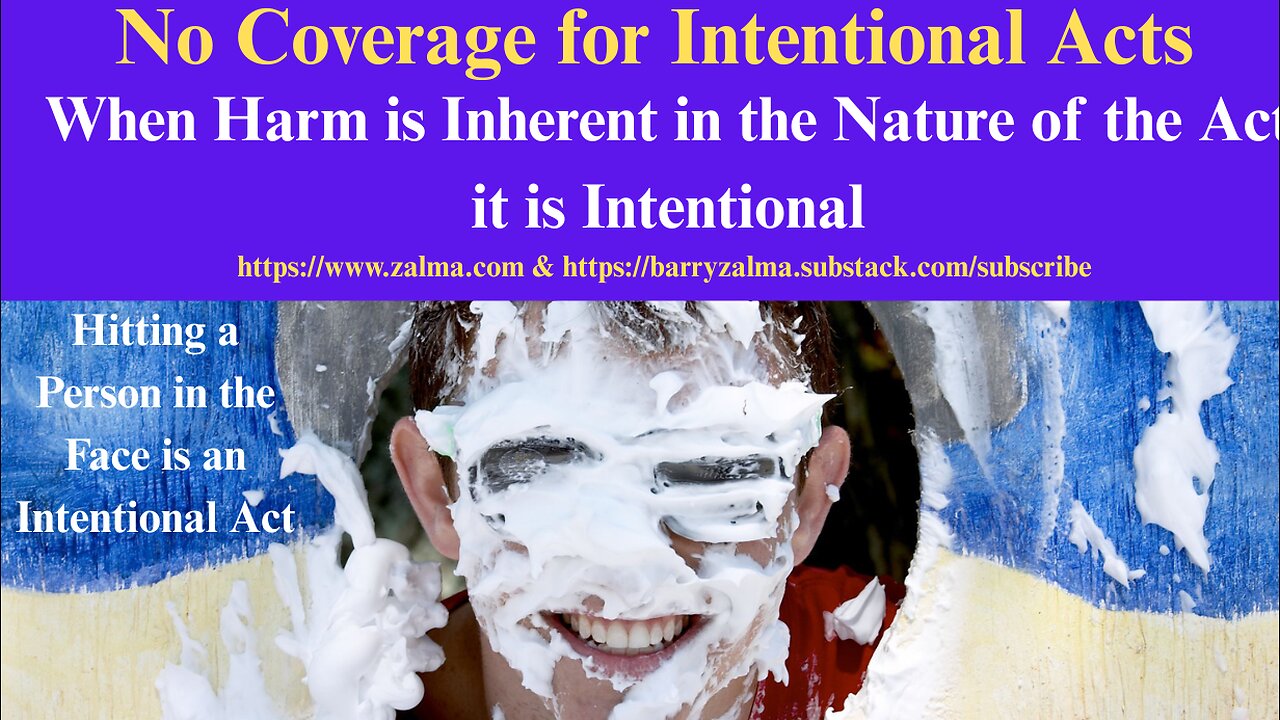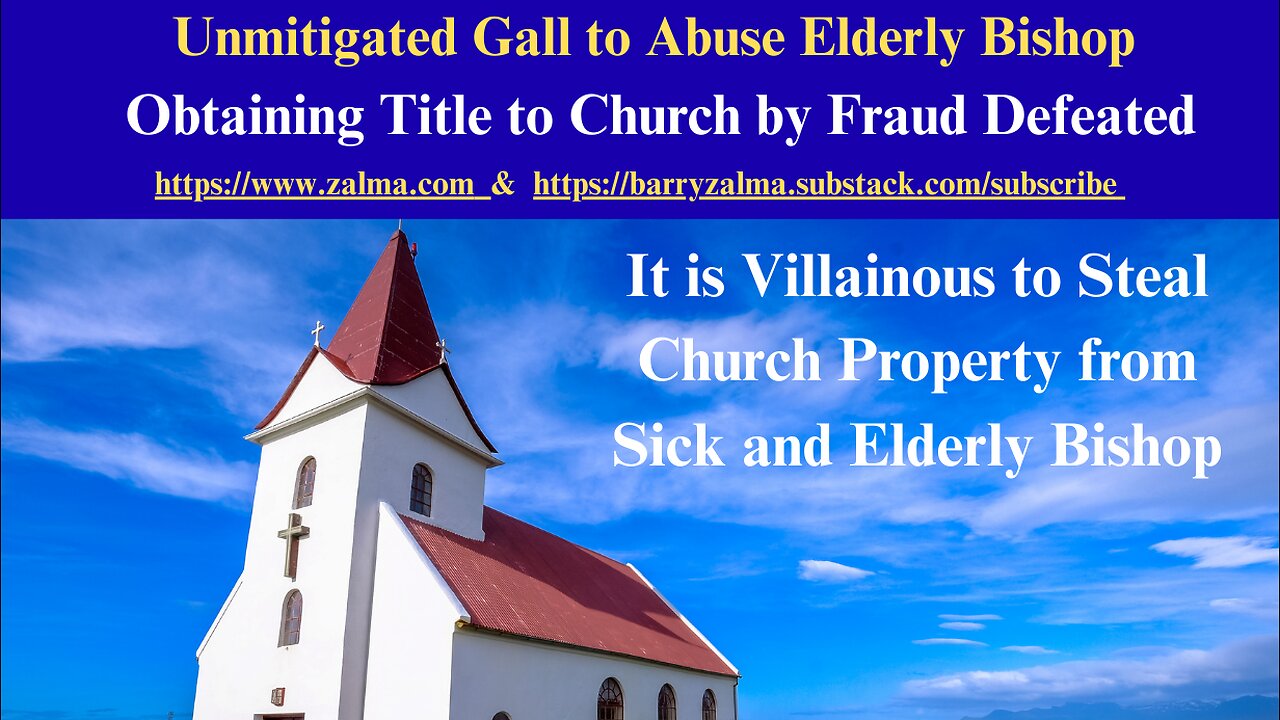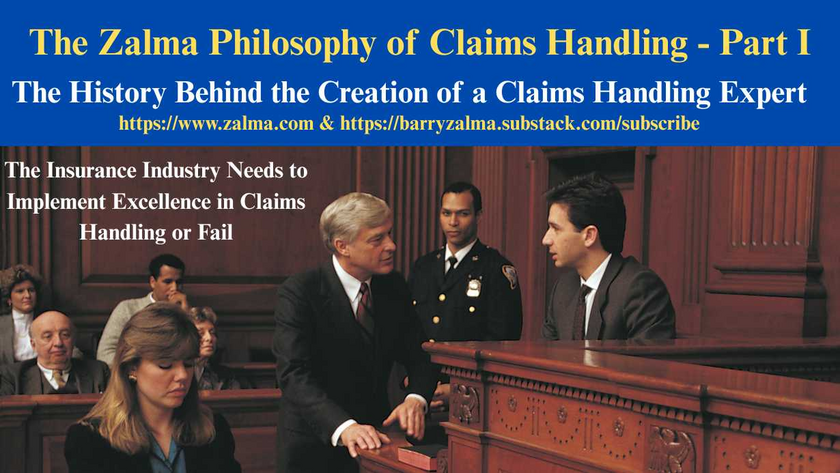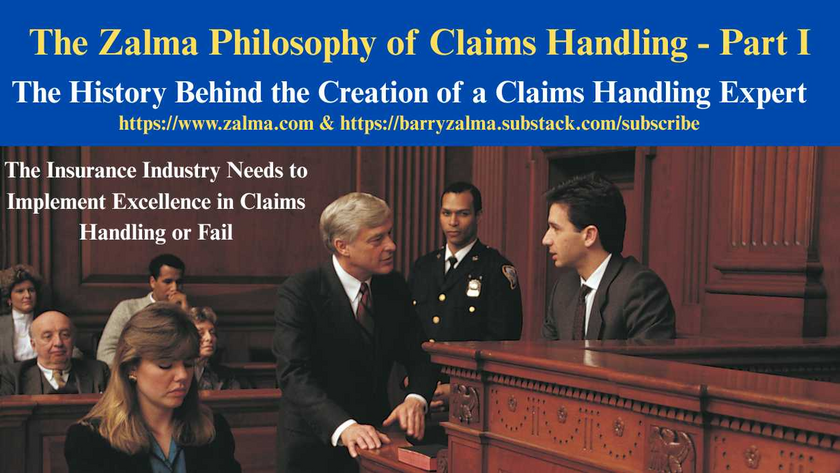
Insurers, working without legislative or judicial direction, created a working definition of the term “actual cash value.”
Barry Zalma
Read the full article at https://lnkd.in/gAe9qn3B and see the full video at https://lnkd.in/g4gqfKXW and at https://lnkd.in/gU4TfmFX and at https://zalma.com/blog plus more than 4300 posts.
Posted on September 28, 2022 by Barry Zalma
Insurers, working without legislative or judicial direction, created a working definition of the term “actual cash value.”
See the full video at https://rumble.com/v1lqhqf-what-is-actual-cash-value.html and at
Insurers recognized that ACV in a fire insurance policy was designed to establish a dollar value for items of destroyed property that were not new at the time of loss. Since the insurers had no easy means to establish the used value of property, they selected the following as their working definition of “actual cash value”: “Actual cash value is the cost to replace with like kind and quality less physical depreciation.” [Jefferson Insurance Company of N.Y. v. Superior Court, 3 Cal. 3d 398 (1970).]
The working definition, although it did not always provide the complete indemnity contemplated by the insureds and by the various legislatures, was eminently practical.
A burned-out shell of a house only leaves clues as to what its actual cash value was before the fire. With minimal investigation the cost of rebuilding can be readily ascertained. If the insurer paid to its insured the full cost of replacement (since the number was easy to compute) it would violate the traditional concept of indemnity.
Payment of replacement cost puts the insured in a better position than he was in before the fire. Deducting from the replacement cost a reasonable percentage representing the physical depreciation, comes as close as possible to providing the insured with true indemnity for the loss.
Over time, courts have developed three primary tests to measure the actual cash value of property. They are:
1. Fair market value, usually described as the price a willing buyer would pay to buy property from a willing seller in a free market.
2. Replacement cost less depreciation, generally accepted to mean the cost to replace property at the time of the loss, minus its physical depreciation.
3. The Broad Evidence Rule. A judicious application of either 1 or 2 to the unique circumstance of the claim, whichever is more favorable to the insured.
Some insurers have taken the hint first expressed in 1970 in Jefferson Insurance Company v. The Superior Court of Alameda County, 3 Cal. 3d 398, and now define the term in most policies issued in California and across the country. Depending on the insurer any one of the three options chosen by the courts across the country has now been incorporated into the policy.
Some insurers elected to calculate ACV by deducting 20% from the full cost of repair or replacement. Since the basic charge had no relation to obtaining true ACV, the practice was widely condemned. For example, the Court of Appeals of Michigan went even further in decrying the practice of withholding 20% for a contractor’s overhead and profit. In Salesin v. State Farm 581 N.W.2d 781, (1998) the court said this about the calculation of actual cash value: “State Farm’s insurance Policy in this case does not contain a definition of “actual cash value,” nor does it set out the basis on which State Farm determines actual cash value. The process by which actual cash value would be determined was contained in State Farm’s Operation Guide. In accordance with the provisions of that document, State Farm routinely deducts contractor’s overhead and profit as well as depreciation when it makes an “actual cash value of the damage” payment under section I.c.(l) of its insurance policy. There was deposition testimony that this procedure is contrary to industry norms and practices.”
In Bradley v. Allstate Ins. Co., USCA, Fifth Circuit, 620 F.3d 509 (2010) the court found Under Louisiana law, actual cash value owed by property insurer is determined by calculating the cost of duplicating the damaged property with new materials of like kind and quality, less allowance for physical deterioration and depreciation. ACV is not, in the Fifth Circuit, necessarily synonymous with market value at the time of the loss.
The touchstone for determining ACV is the basic principle that an adequately insured person should incur neither economic gain nor loss when his property is destroyed.
The term obsolescence appears within the contract definition of “actual cash value,” which is one of several methods insurers use to value a property in the event of a loss. Other methods are market value, reproduction value, and replacement value.
Many courts, including those in Michigan, adopted what is known as the “broad evidence” rule to determine the actual cash value when the term is undefined in a contract. [Davis v. Nat’l Am. Ins. Co., 78 Mich.App. 225, 259 N.W.2d 433, 438 (1977)]. Under the rule, fact finders or appraisers may consider “any evidence logically tending to the formation of a correct estimate” of the value of the property, including “market or reproduction or replacement values.”
The Standard Fire Insurance Policy has provided, in essentially the same language since 1909:”In consideration of the provisions and stipulations herein … this company does insure the above-named insured … to the extent of the actual cash value of the property at the time of the loss.”
The intent of the legislature of the various states that have enacted a statutory fire policy, by enacting a mandatory form of fire insurance policy, was to codify and implement the traditional concept of fire insurance. Insurance exists to indemnify or compensate the insured for the actual loss he has sustained, without necessarily placing him in a better position than he was at the time of the fire. [Breshears v. Indiana Lumbermans Mutual Ins. Co., 256 Cal. App. 2d 245, 63 Cal. Rptr. 879 (1967).]
Appellate courts have rarely been called upon to explain this basic purpose of fire insurance, as codified. When called upon, the courts have limited their decisions to the fact situations presented to them. They have always confirmed that the purpose of insurance is to provide indemnity. It was only the methods by which such indemnity was to be achieved that was subject to interpretation.
Perhaps to ease the burden on the courts, the state legislatures provided a means by which the traditional concept of indemnity could be measured. For example, the California Legislature stated: “The measure of indemnity in fire insurance is the expense to the insured of replacing the thing lost or injured in its condition at the time of the injury, such expense being computed as of the time of the commencement of the fire”. [California Insurance Code § 2051.]
The legislature failed, however, to explain how one was to compute the cost of replacing a 30-year-old building. There is almost no supply of 30-year-old plumbing or lumber for the insured to purchase. A carpenter cannot construct a 30-year-old dwelling, he can only construct a new dwelling. It is physically impossible to put an insured exactly as he was before the fire.
It took 30 years of hard weather to pit the siding; many windstorms to wear and loosen the shingles, an earthquake or two to tilt the foundation, and four growing children to beat it up mercilessly. The problem of creating old with new, the legislature left to the courts, litigants, and the agile minds of adjusters and lawyers.
Analysis
Courts have touched the issue, gingerly. They have paid lip service to the statutory mandate that the insured is only entitled to recover under the policy such loss as he has actually sustained. [Whitney Estate Co. v. Northern Insurance Co. of London, 155 Cal 521, 101 P. 911 (1909).] Sometimes, the courts simply reduced an award to a sum less than full
replacement cost with no explanation as to why the deduction was made. [Koyer v. Detroit F & M Ins. Co., 9 Cal. 2d 340 (1937).]
The question of how the actual cash value of Covered Property should be determined when calculating the value of any applicable premium is essential. Three different tests exist to determine the actual cash value of property when the policy is silent on the definition. Those tests are:
1. the fair market value test;
2. the replacement costs minus depreciation test; and
3. the broad evidence rule.
This article came from my newest book, “How to Acquire, Understand, and Make a Successful Claim on a Commercial Property Insurance Policy: Information Needed for Individuals and Insurance Pros to Deal With Commercial Property Insurance” Now Available as a Kindle book here, paperback here and as a hardcover here
(c) 2022 Barry Zalma & ClaimSchool, Inc.
Barry Zalma, Esq., CFE, now limits his practice to service as an insurance consultant specializing in insurance coverage, insurance claims handling, insurance bad faith and insurance fraud almost equally for insurers and policyholders. He practiced law in California for more than 44 years as an insurance coverage and claims handling lawyer and more than 54 years in the insurance business. He is available at http://www.zalma.co
m and [email protected].
Subscribe and receive videos limited to subscribers of Excellence in Claims Handling at locals.com https://zalmaoninsurance.locals.com/subscribe.Subscribe to Excellence in Claims Handling at https://barryzalma.substack.com/welcome.
Write to Mr. Zalma at [email protected]; http://www.zalma.com; http://zalma.com/blog; daily articles are published at https://zalma.substack.com.
Go to the podcast Zalma On Insurance at https://anchor.fm/barry-zalma; Follow Mr. Zalma on Twitter at https://twitter.com/bzalma; Go to Barry Zalma
Now available Barry Zalma’s newest book, The Tort of Bad Faith, available here. The new book is available as a Kindle book, a paperback or as a hard cover and a new book on Commercial Property Insurance purchase and claims that is now available as a Kindle book here, paperback here and as a hardcover here.
When Harm is Inherent in the Nature of the Act it is Intentional
Post 5237
See the video at and at and at https://zalma.com/blog plus more than 5200 posts.
No Coverage for Intentional Acts
Hitting a Person in the Face is an Intentional Act
In Unitrin Auto and Home Insurance Company v. Brian C. Sullivan, et al., George A. Ciminello, No. 2022-01607, Index No. 21632/14, Supreme Court of New York, Second Department (November 19, 2025) George A. Ciminello was injured when struck in the face by a cup filled with liquid, thrown from a moving vehicle operated by Brian C. Sullivan, with Robert Harford as the passenger who threw the cup. The vehicle approached Ciminello at about 30 mph, from 2 to 10 feet away, and Harford extended his arm to make contact. The cup splintered upon impact.
Sullivan and Harford later conceded liability on the intentional tort claim before a damages trial.
Insurance Policy:
Unitrin Auto and Home...

Obtaining Title to Church by Fraud Defeated
Post 5238
Read the full article at https://www.linkedin.com/pulse/unmitigated-gall-abuse-elderly-bishop-his-church-zalma-esq-cfe-xcasc, see the video at and at and at https://zalma.com/blog plus more than 5200 posts.
It is Villainous to Steal Church Property from Sick and Elderly Bishop
In Testimonial Cathedral Local Church of God in Christ v. EquityKey Real Estate Option, LLC et al. (Cal. Ct. App., 2d Dist., Div. 8, No. B331522 (Nov. 18, 2025) EquityKey (through broker Steven Sharpe and Frank Wheaton, a trusted advisor/friend of elderly Bishop Jimmy Hackworth) presented a deal supposedly for a $4 million life-insurance policy on Hackworth’s life with EquityKey as beneficiary. In exchange, EquityKey paid Hackworth $400,000 upfront.
Factual Background
To qualify Hackworth for the large policy, church real property on South Western Ave., Los Angeles was temporarily ...

Guilty of Money Laundering Scheme
Post 5238
See the video at https://lnkd.in/gqh7V46x and at https://lnkd.in/gmE-zrDC and at https://zalma.com/blog plus more than 5200 posts.
Prison Sentence for Fraud Must be Limited to the Fraud in Which the Defendant Participated
In United States v. Stephen O. Anagor, No. 2:24-CR-00019-DCLC-CRW (E.D. Tenn., Nov. 26, 2025) by Judge Clifton L. Corker the government sought to increase the defendant’s sentence because his co-conspirators added a fraudulent FBI scam that resulted in the victim’s suicide. Anagor sought a lower sentence because he was only involved in part of the fraud.
Charges & Plea
Defendant, a U.S. Army soldier pled guilty on June 11, 2025 to Conspiracy to Commit Mail and Wire Fraud, Aiding and Abetting Aggravated Stalking Resulting in Death and Aiding and Abetting Aggravated Identity Theft that was part of a larger 38-count superseding indictment against Anagor and co-defendants Chinagorom Onwumere and Salma Abdalkareem for an international Nigerian-based ...
The Professional Claims Handler
Post 5219
Posted on October 31, 2025 by Barry Zalma
An Insurance claims professionals should be a person who:
Can read and understand the insurance policies issued by the insurer.
Understands the promises made by the policy.
Understand their obligation, as an insurer’s claims staff, to fulfill the promises made.
Are competent investigators.
Have empathy and recognize the difference between empathy and sympathy.
Understand medicine relating to traumatic injuries and are sufficiently versed in tort law to deal with lawyers as equals.
Understand how to repair damage to real and personal property and the value of the repairs or the property.
Understand how to negotiate a fair and reasonable settlement with the insured that is fair and reasonable to both the insured and the insurer.
How to Create Claims Professionals
To avoid fraudulent claims, claims of breach of contract, bad faith, punitive damages, unresolved losses, and to make a profit, insurers ...

The History Behind the Creation of a Claims Handling Expert
The Insurance Industry Needs to Implement Excellence in Claims Handling or Fail
Post 5210
This is a change from my normal blog postings. It is my attempt. in more than one post, to explain the need for professional claims representatives who comply with the basic custom and practice of the insurance industry. This statement of my philosophy on claims handling starts with my history as a claims adjuster, insurance defense and coverage lawyer and insurance claims handling expert.
My Training to be an Insurance Claims Adjuster
When I was discharged from the US Army in 1967 I was hired as an insurance adjuster trainee by a professional and well respected insurance company. The insurer took a chance on me because I had been an Army Intelligence Investigator for my three years in the military and could use that training and experience to be a basis to become a professional insurance adjuster.
I was initially sat at a desk reading a text-book on insurance ...

The History Behind the Creation of a Claims Handling Expert
The Insurance Industry Needs to Implement Excellence in Claims Handling or Fail
Post 5210
This is a change from my normal blog postings. It is my attempt. in more than one post, to explain the need for professional claims representatives who comply with the basic custom and practice of the insurance industry. This statement of my philosophy on claims handling starts with my history as a claims adjuster, insurance defense and coverage lawyer and insurance claims handling expert.
My Training to be an Insurance Claims Adjuster
When I was discharged from the US Army in 1967 I was hired as an insurance adjuster trainee by a professional and well respected insurance company. The insurer took a chance on me because I had been an Army Intelligence Investigator for my three years in the military and could use that training and experience to be a basis to become a professional insurance adjuster.
I was initially sat at a desk reading a text-book on insurance ...















